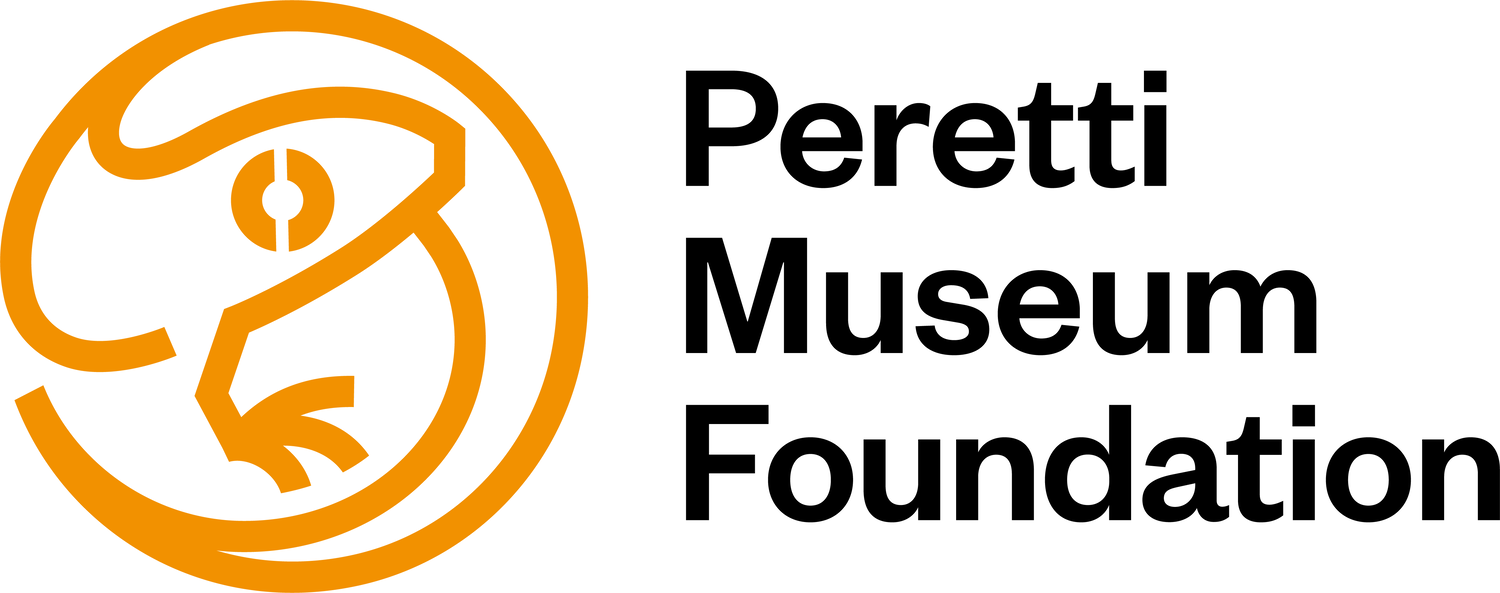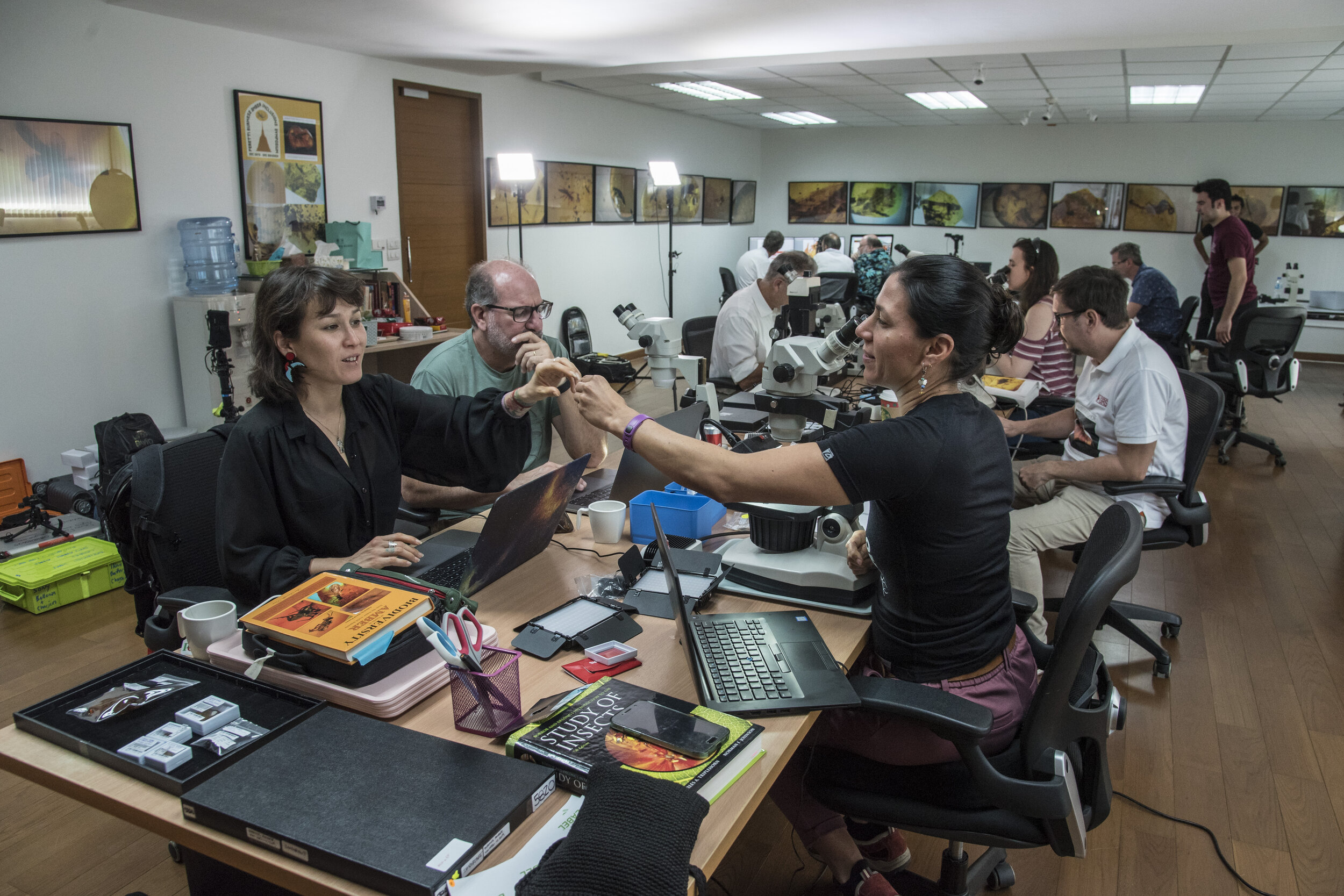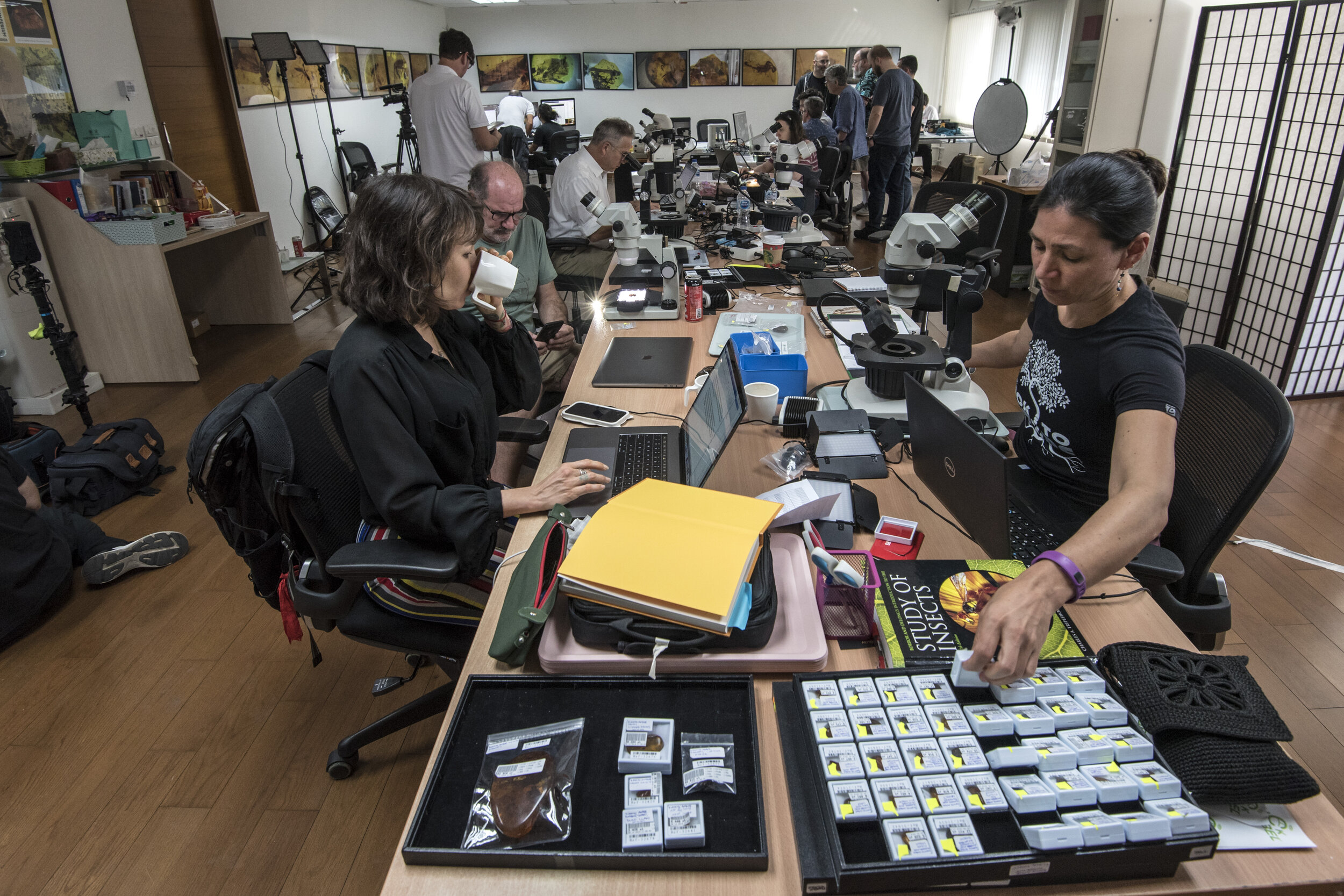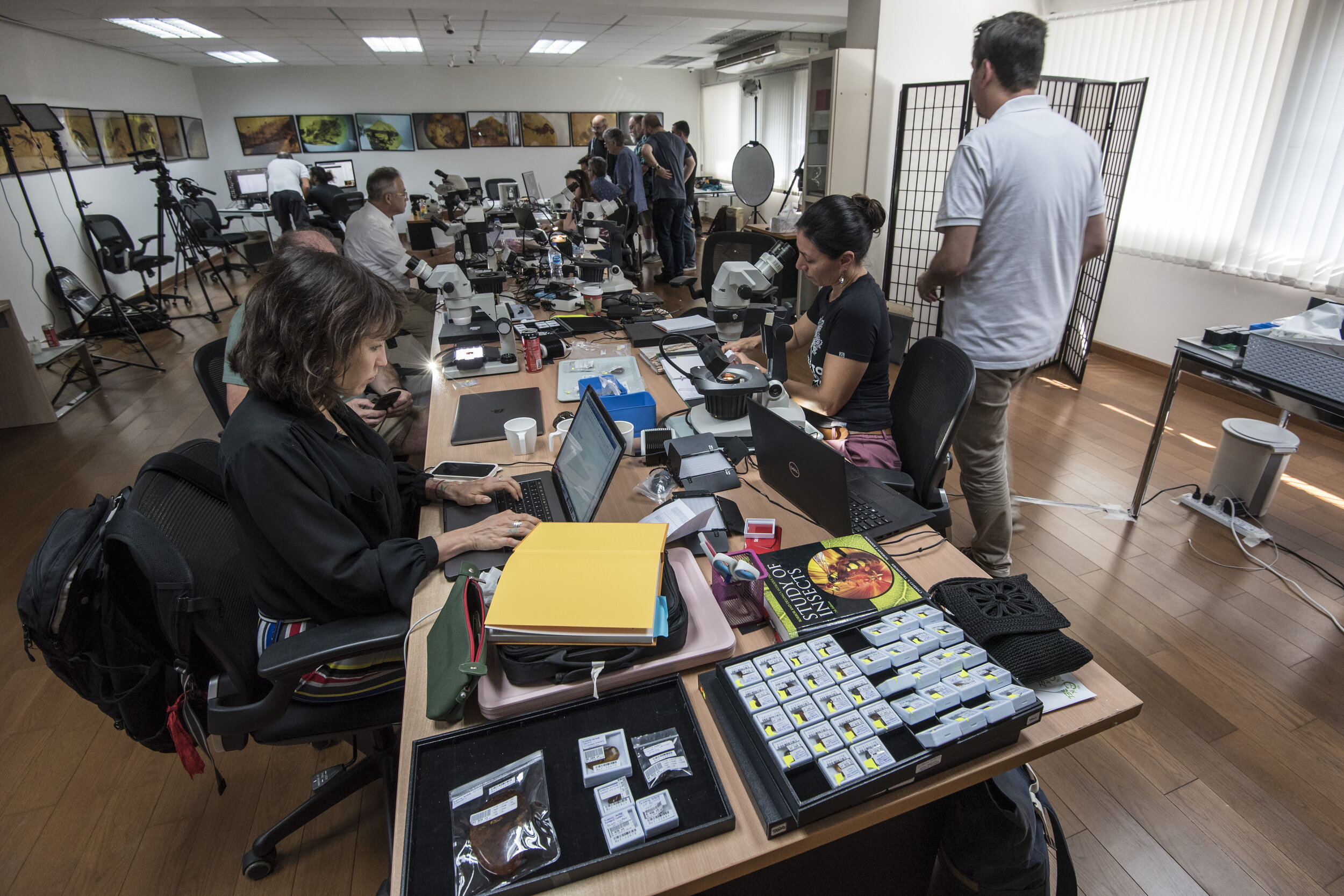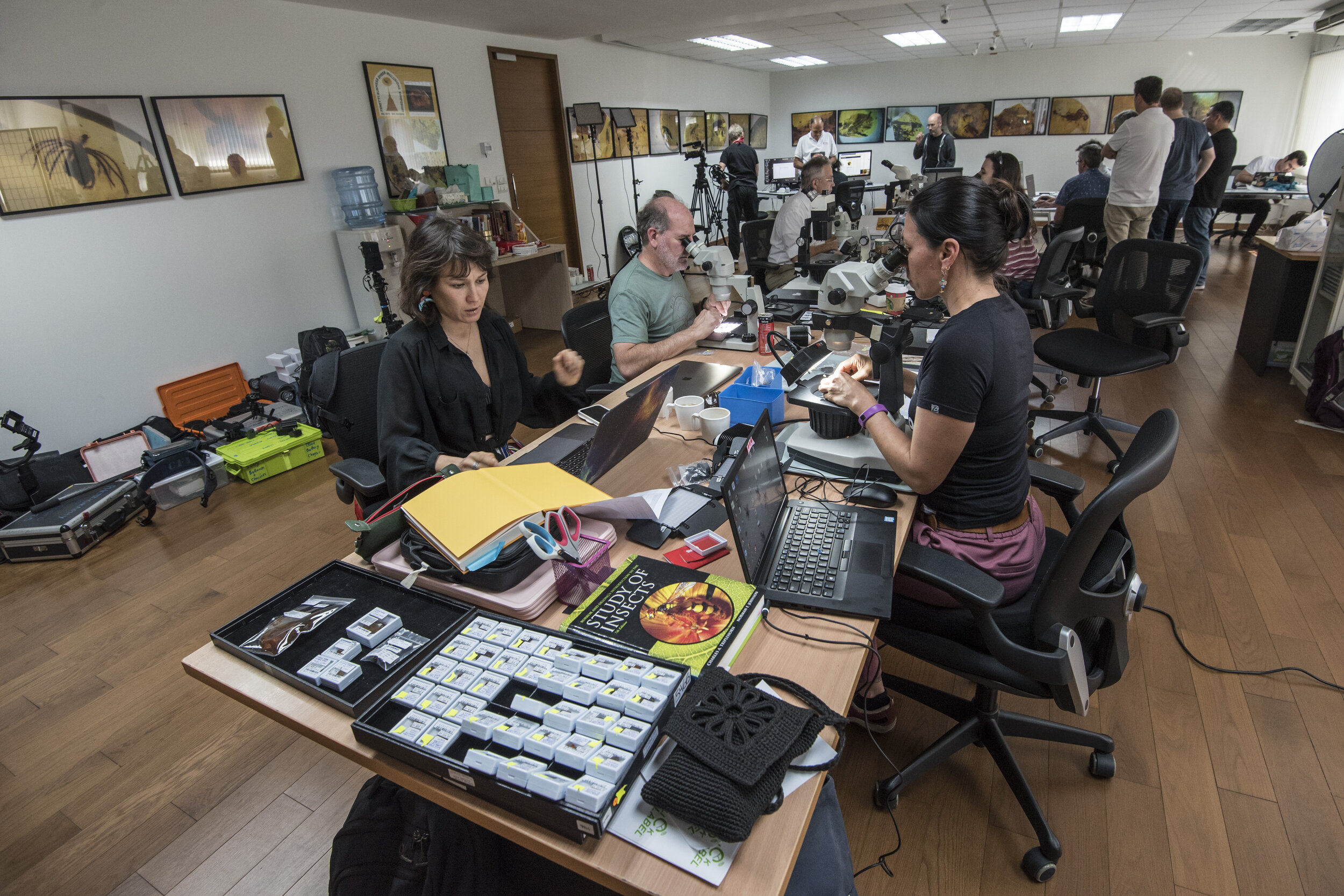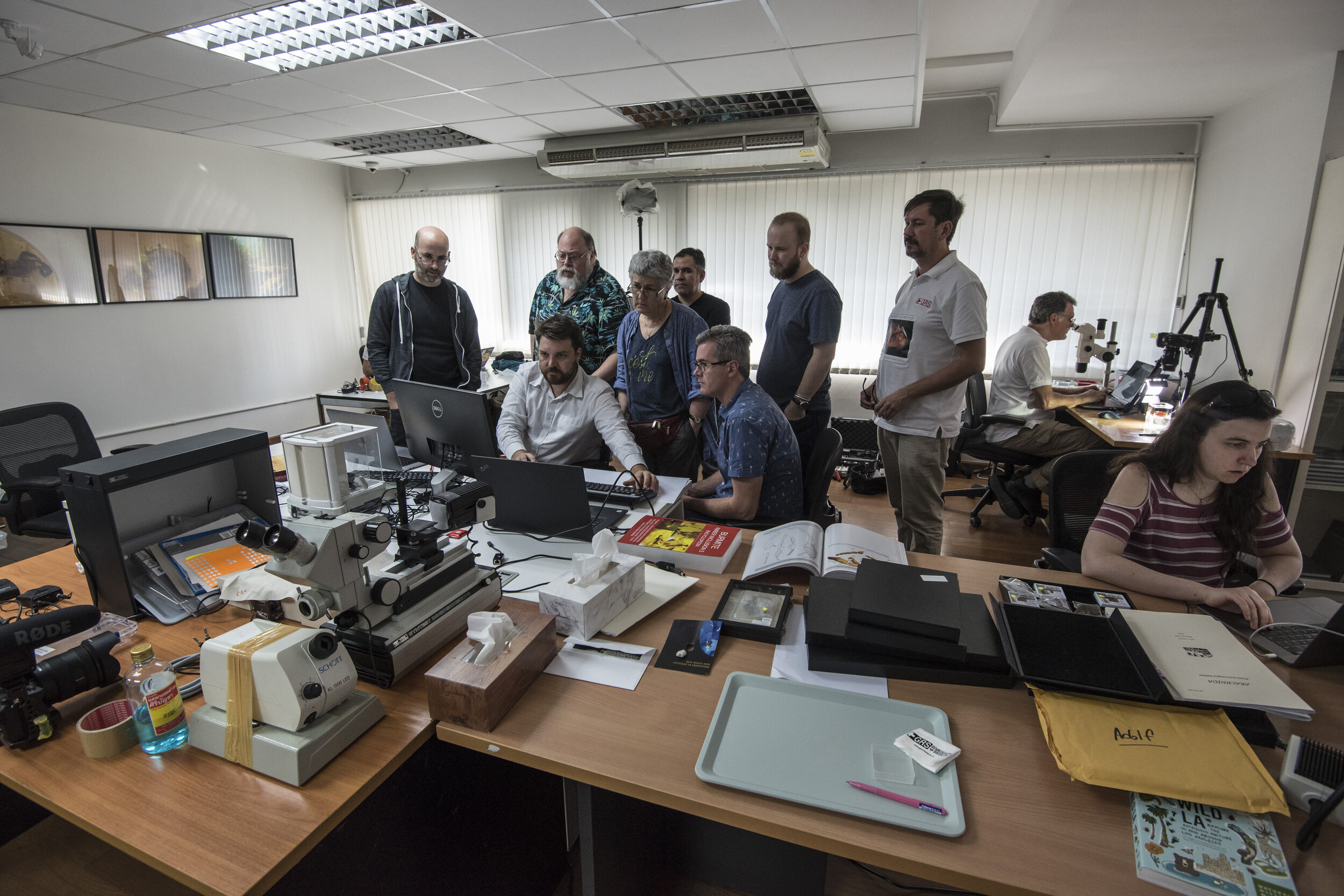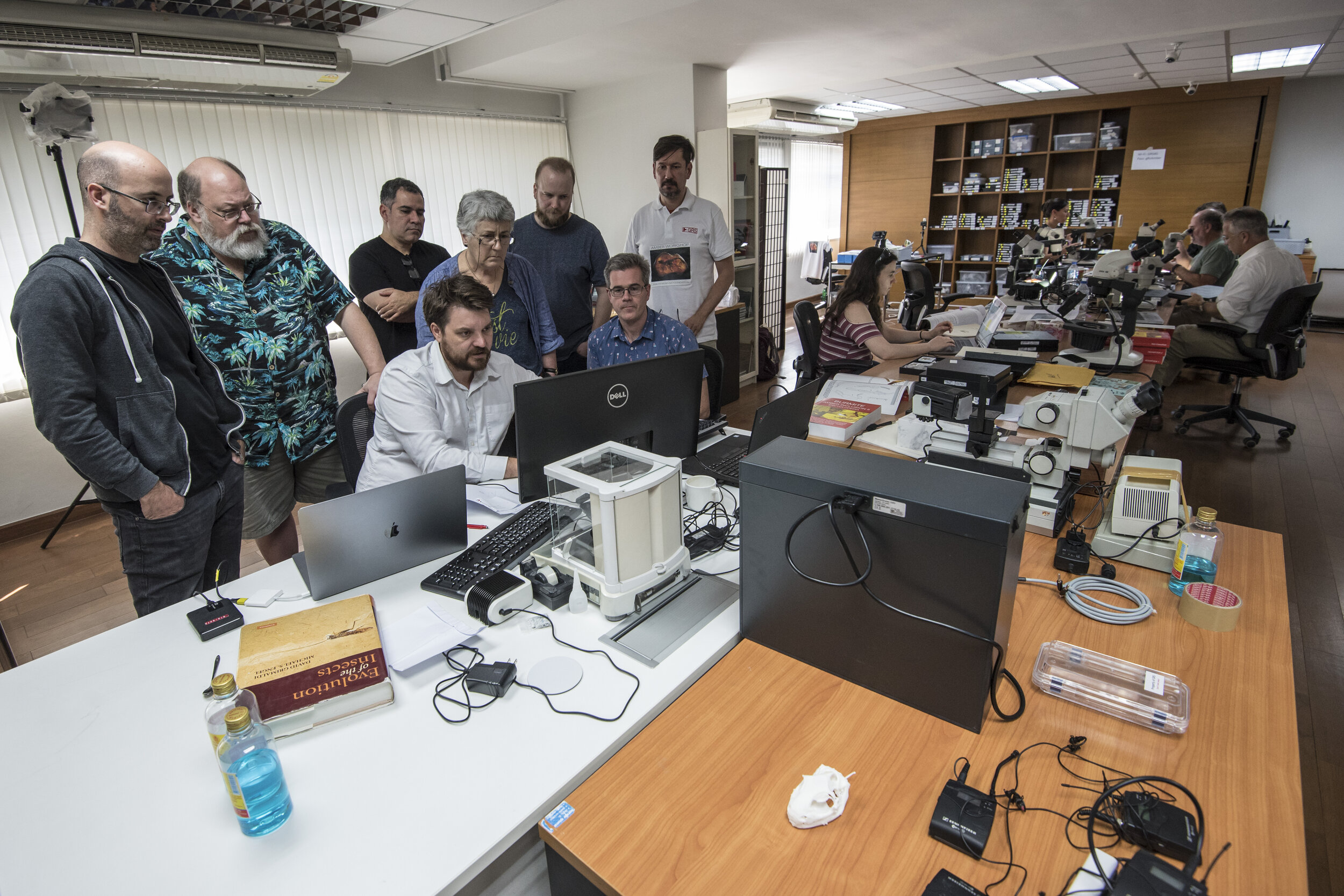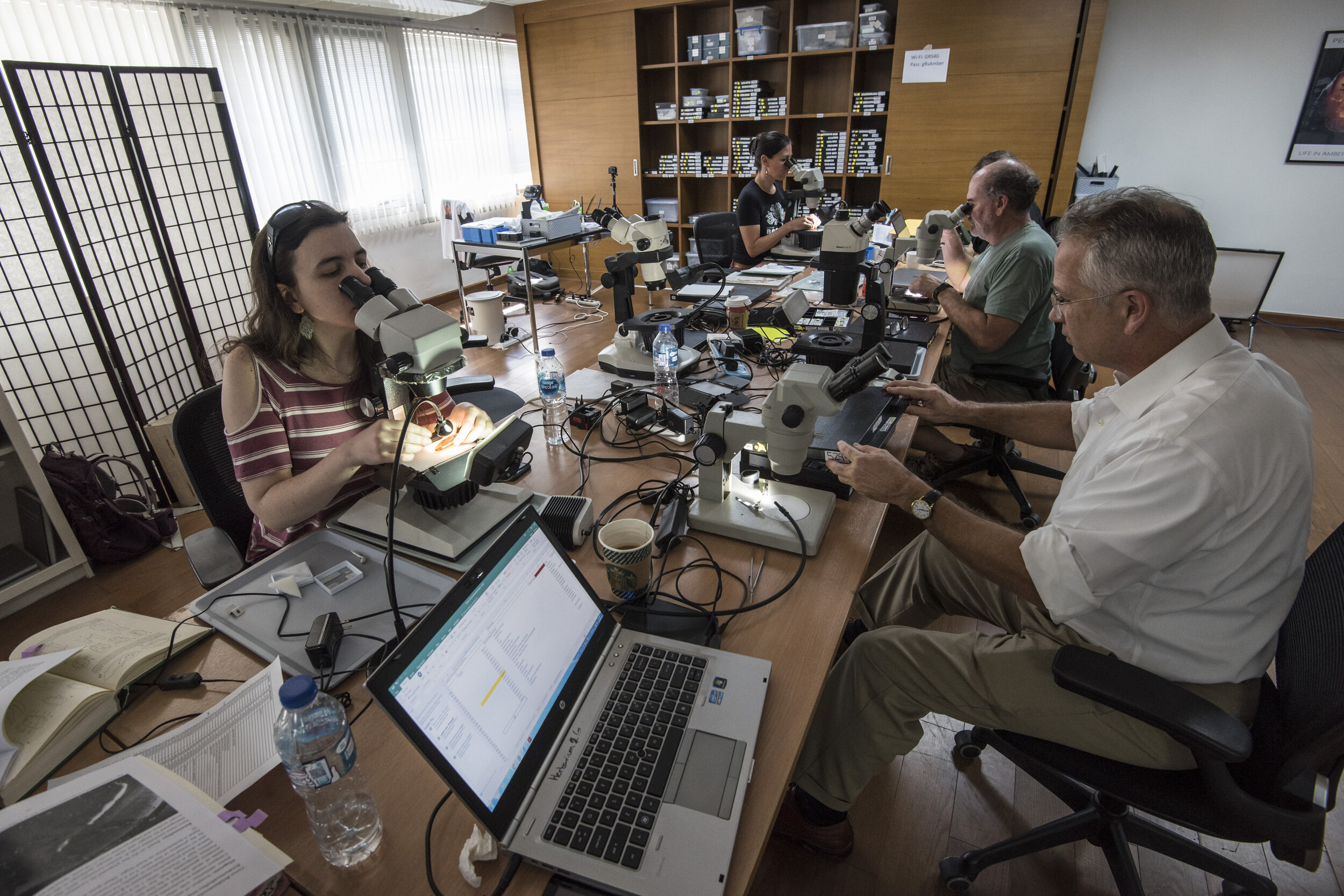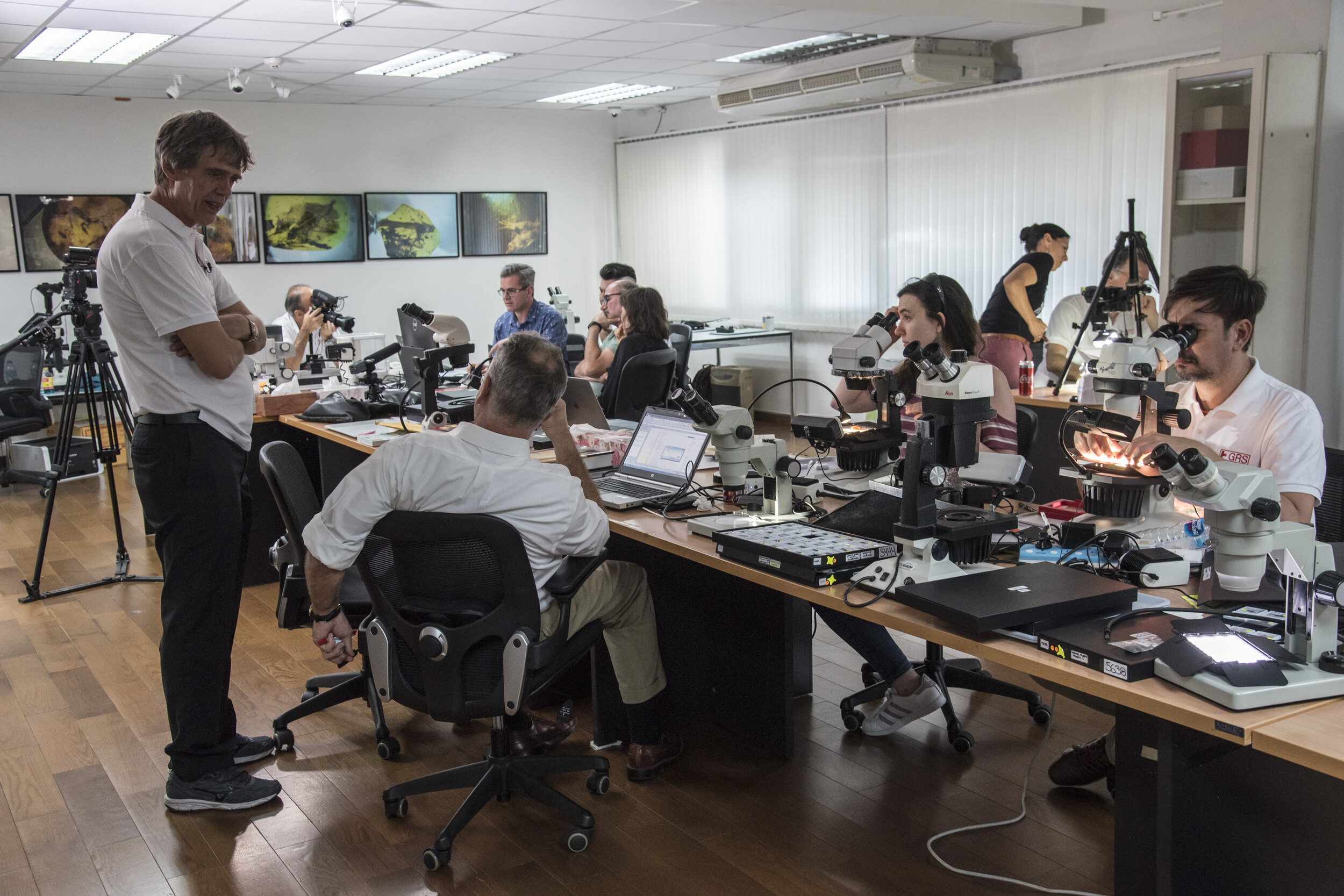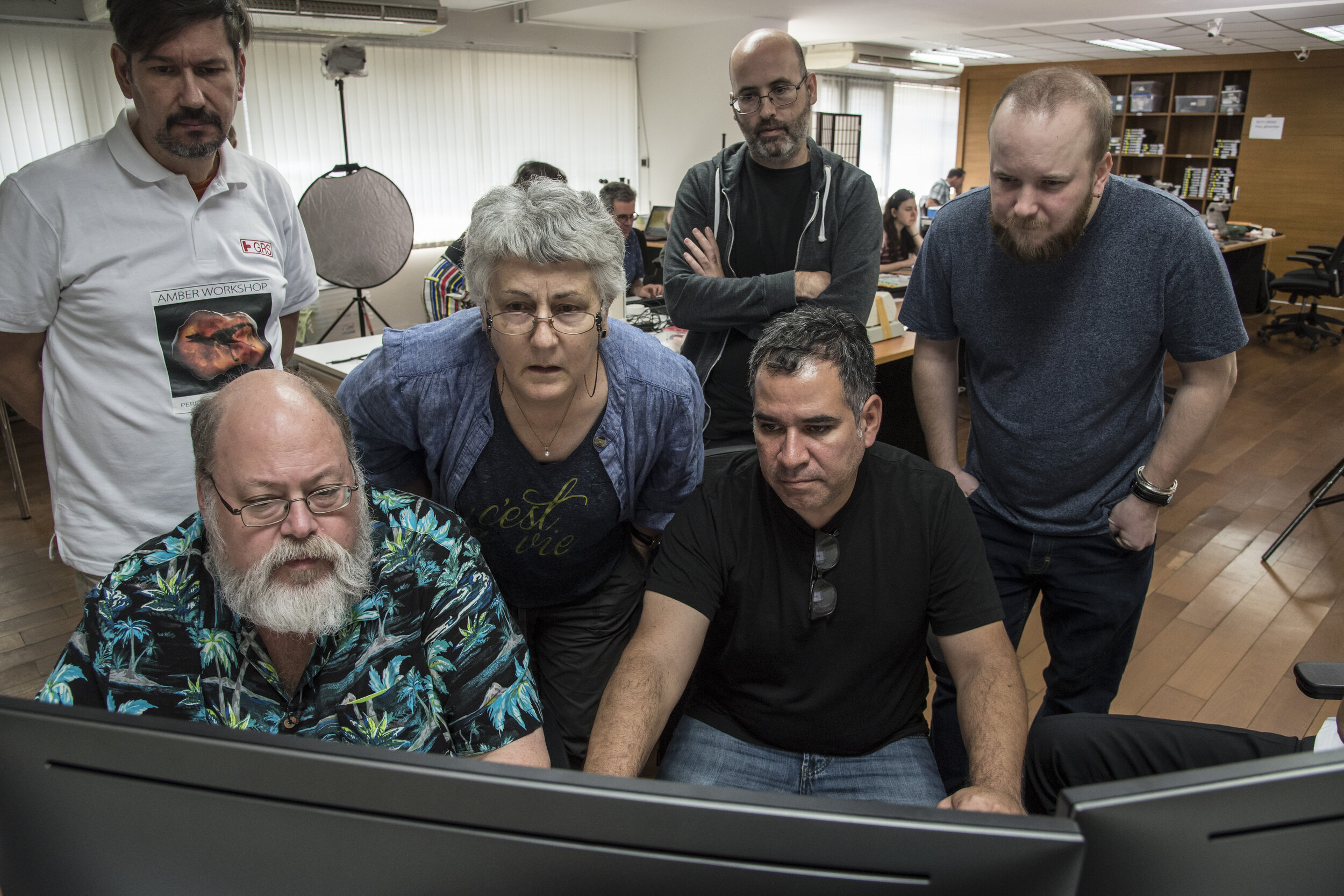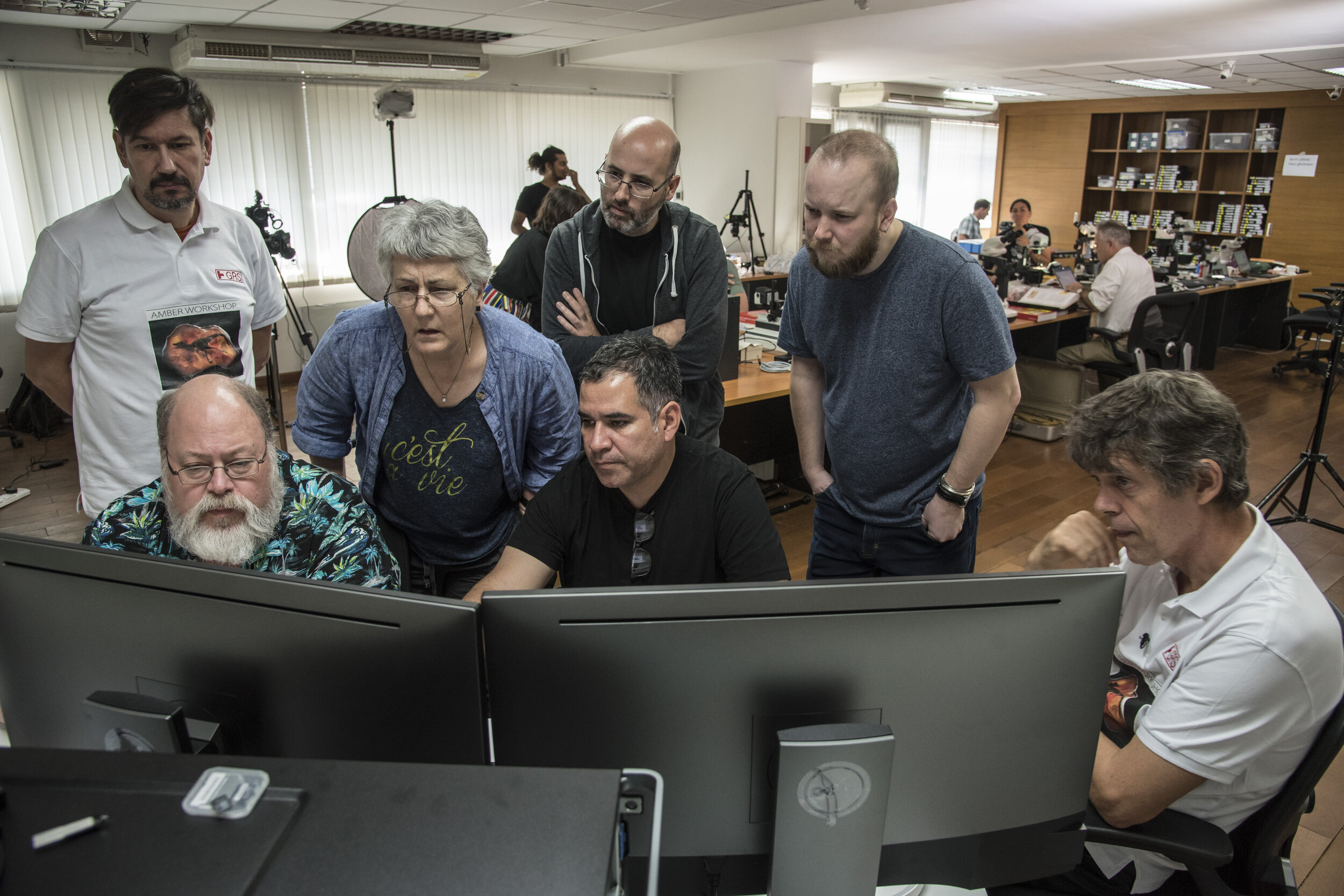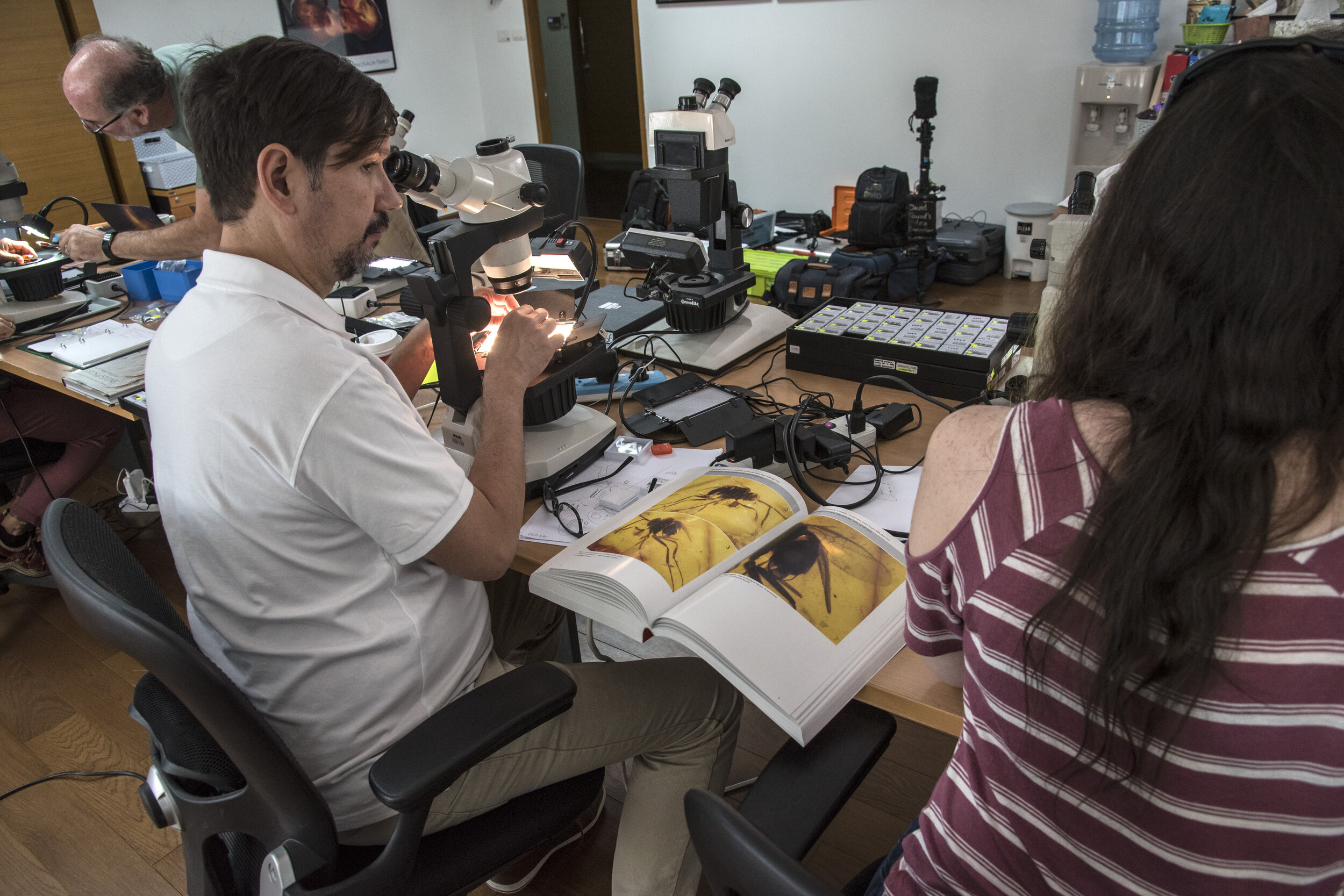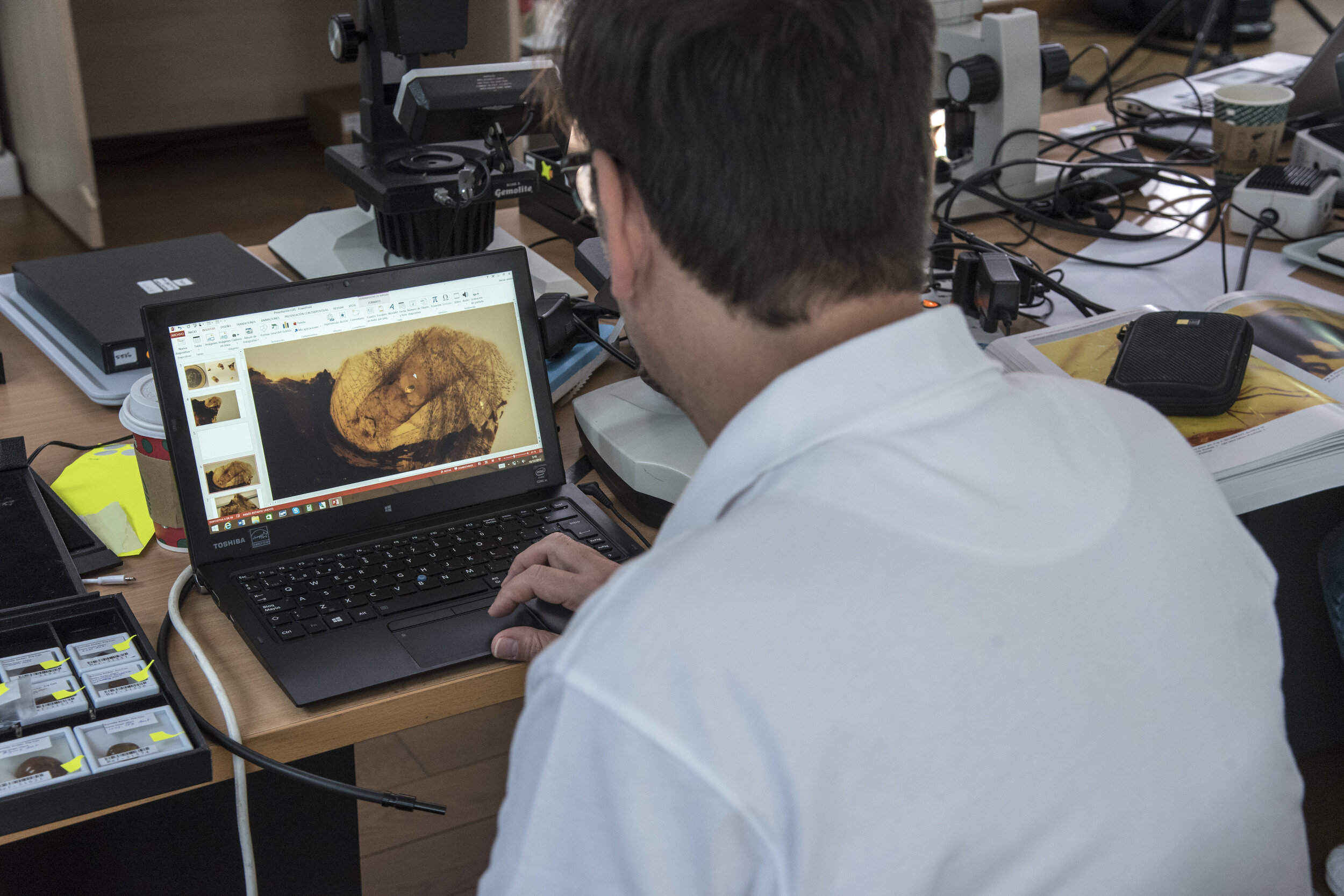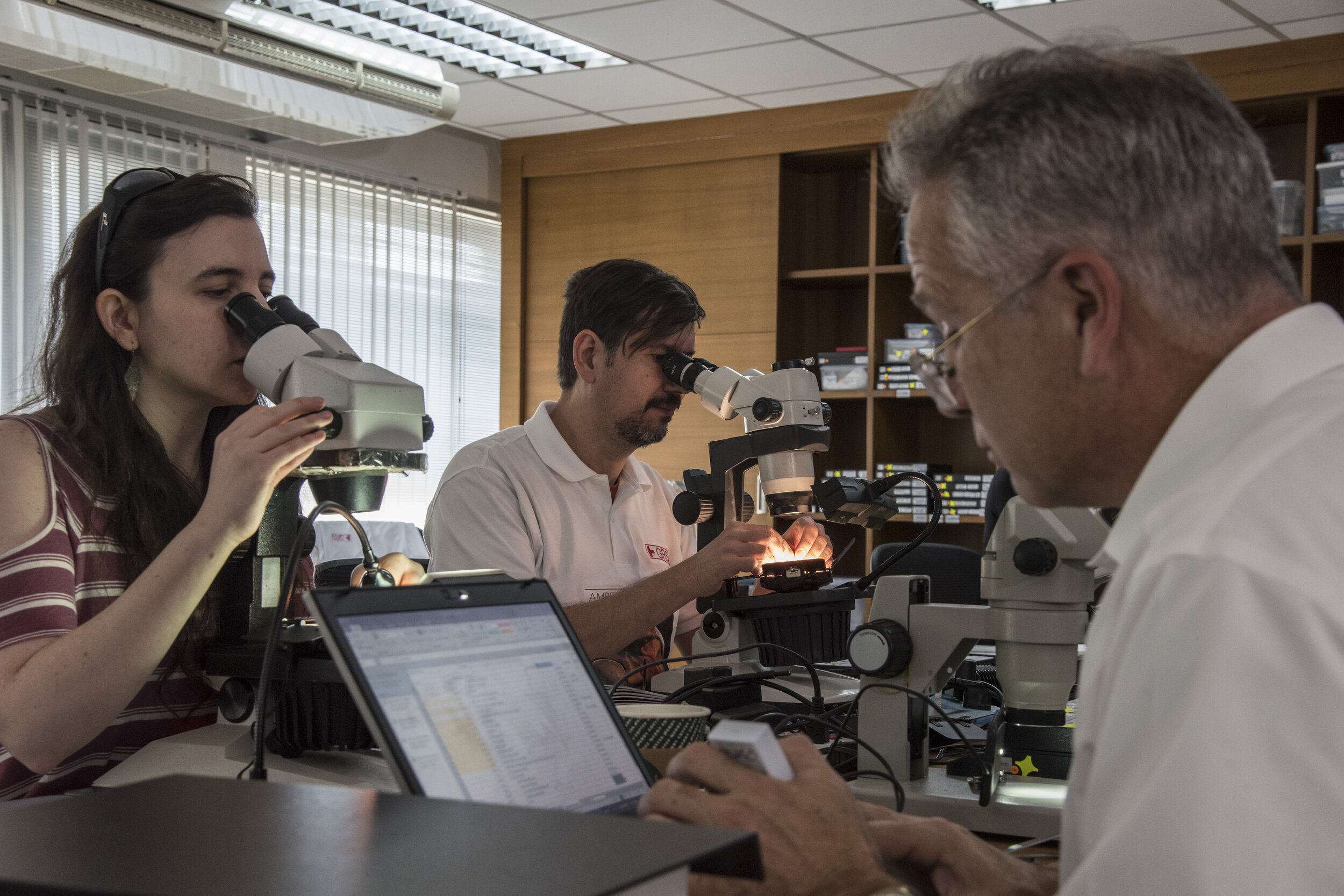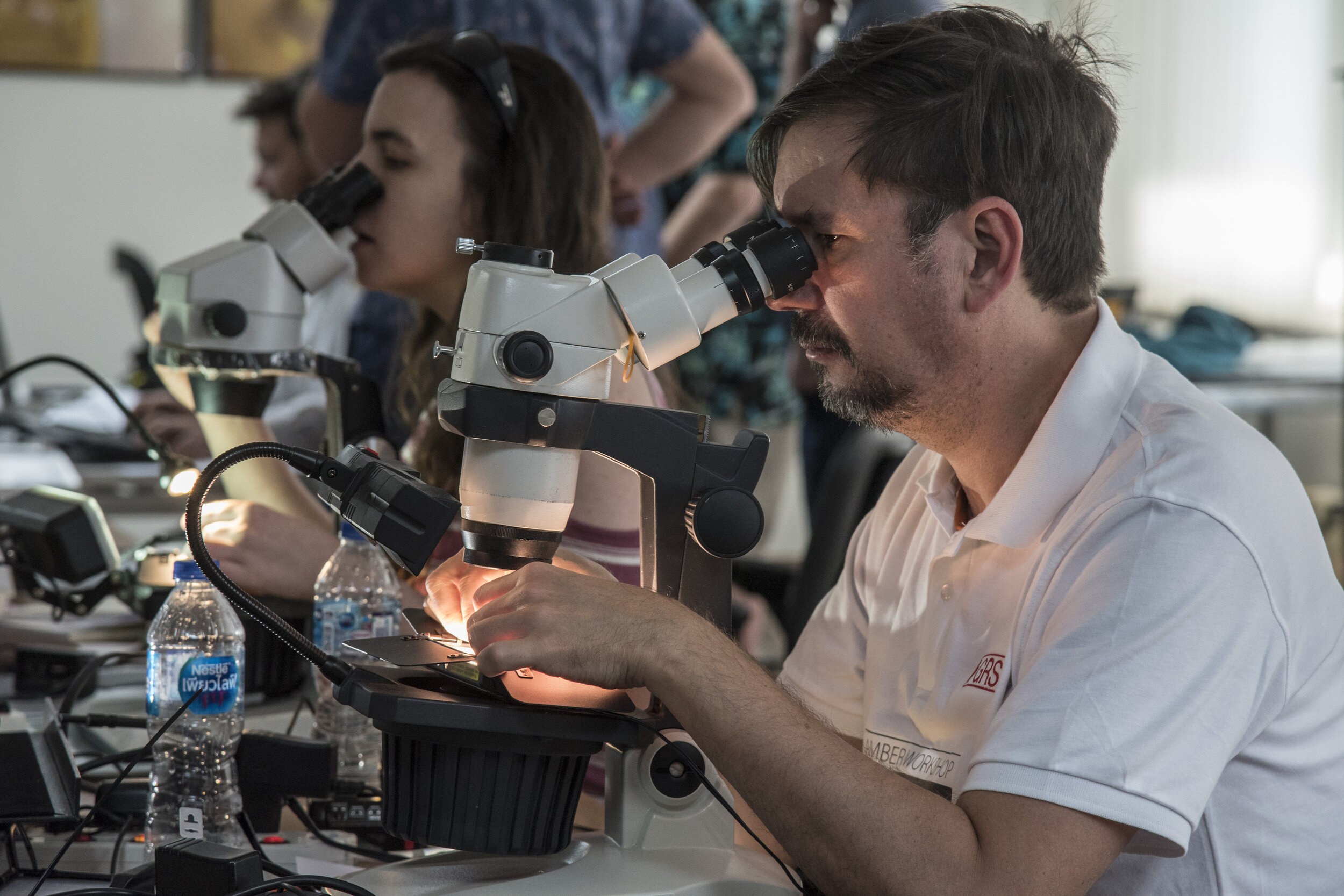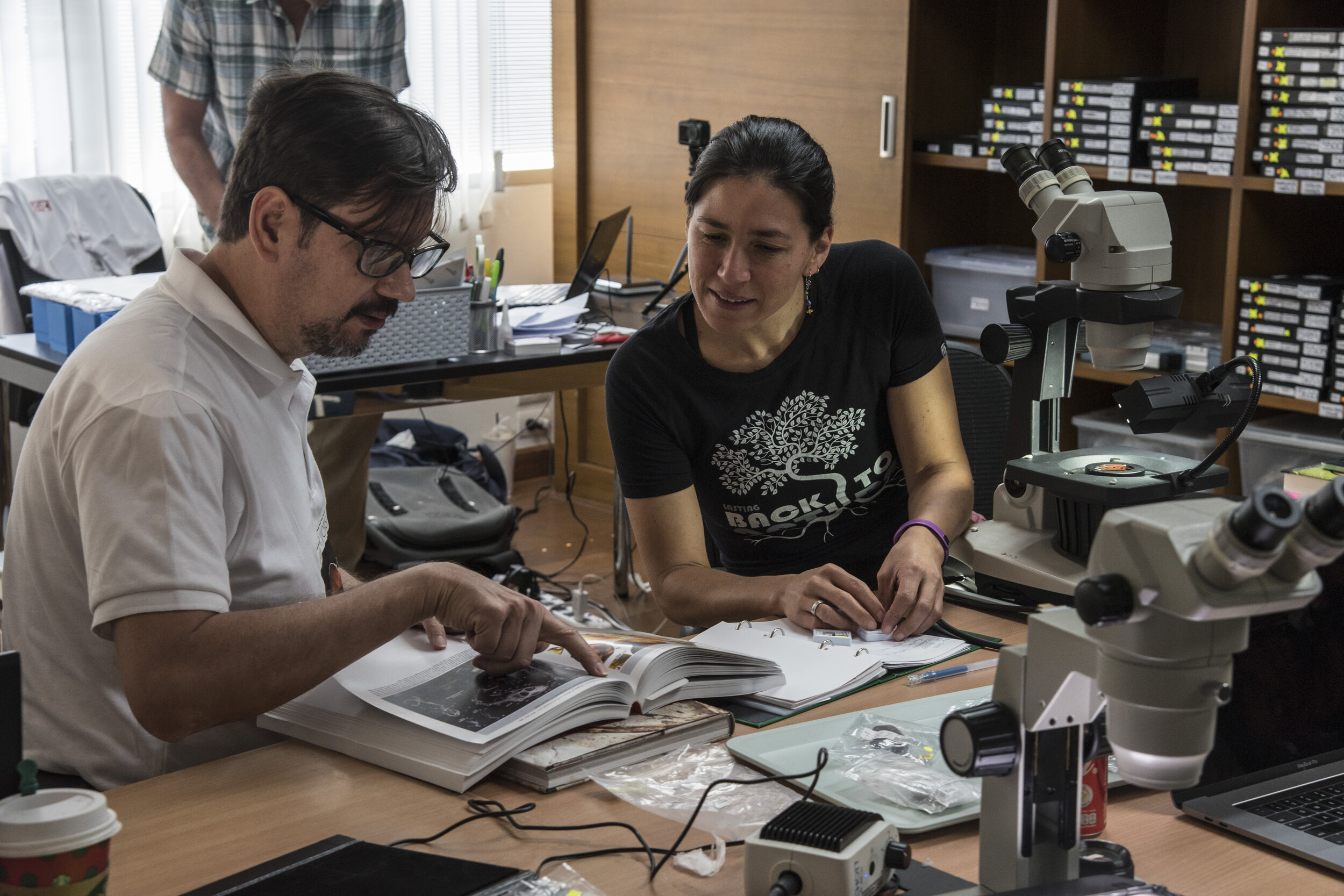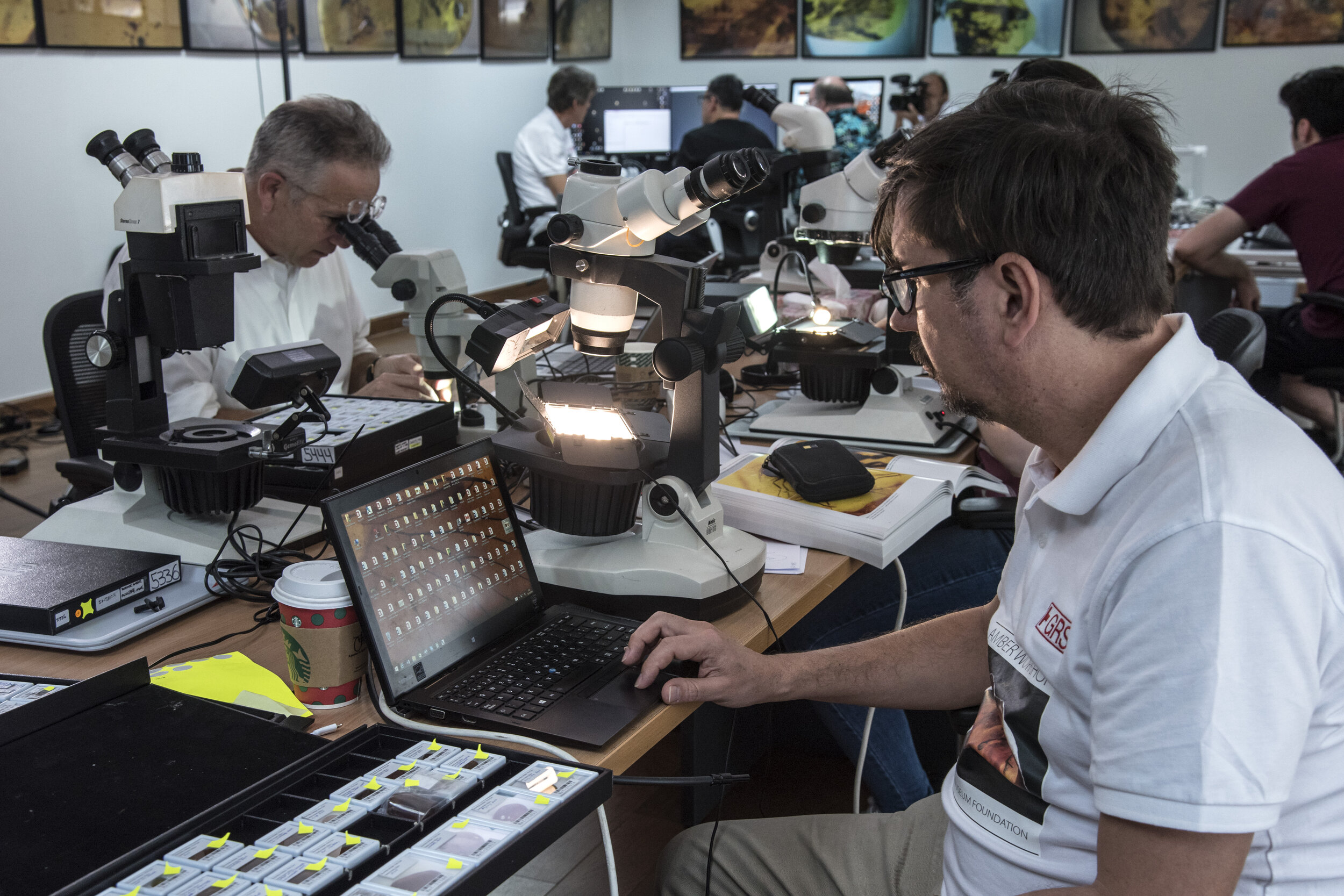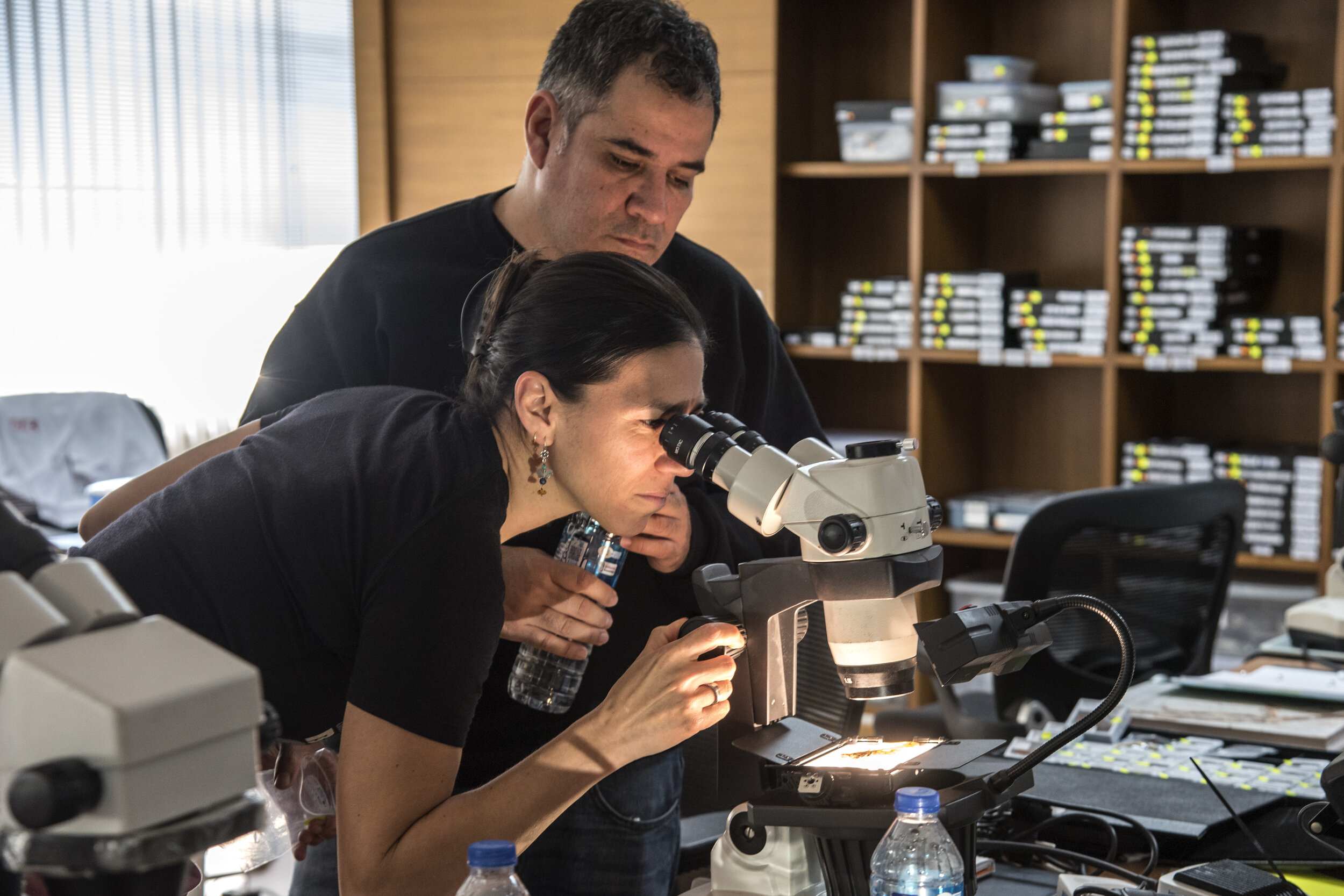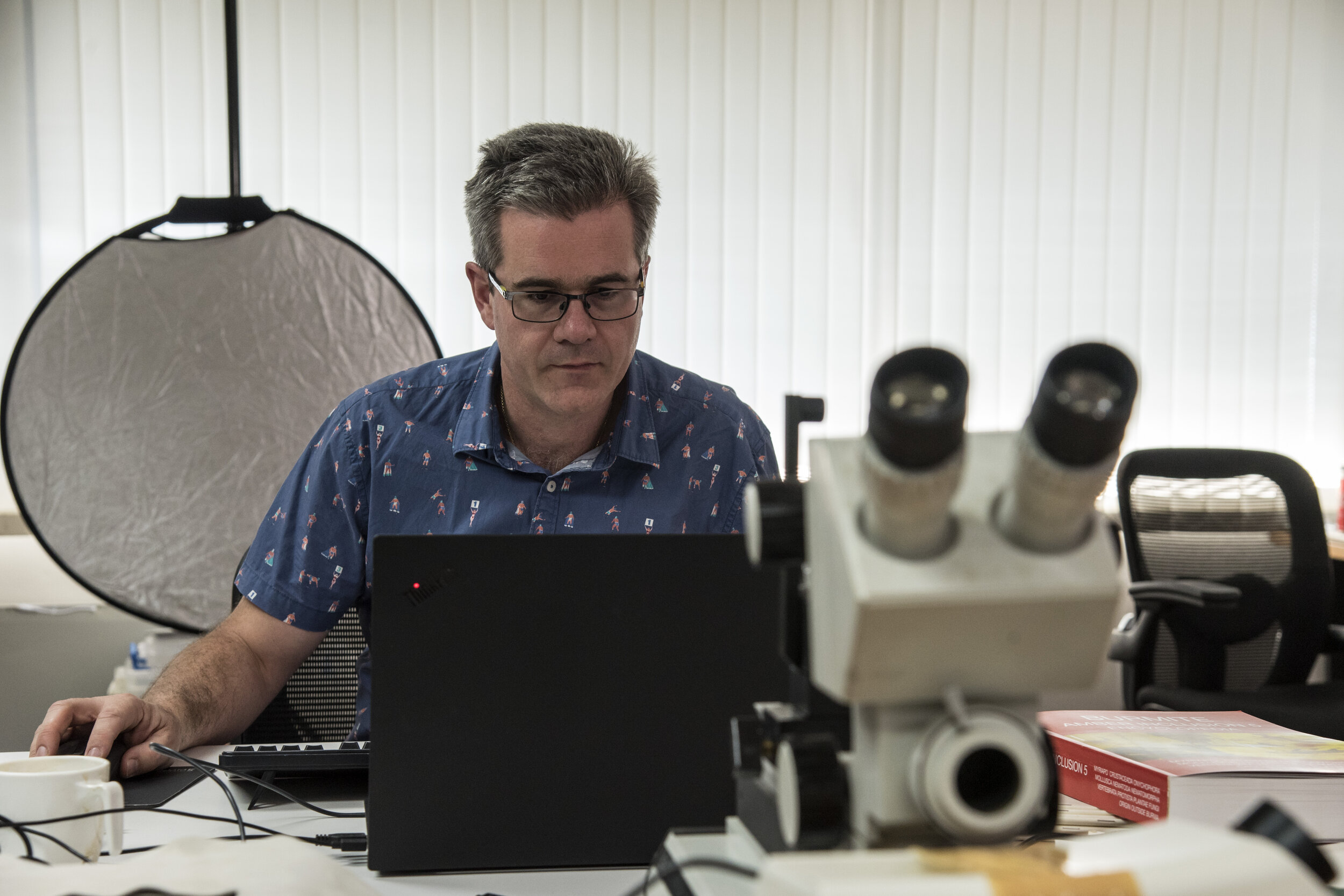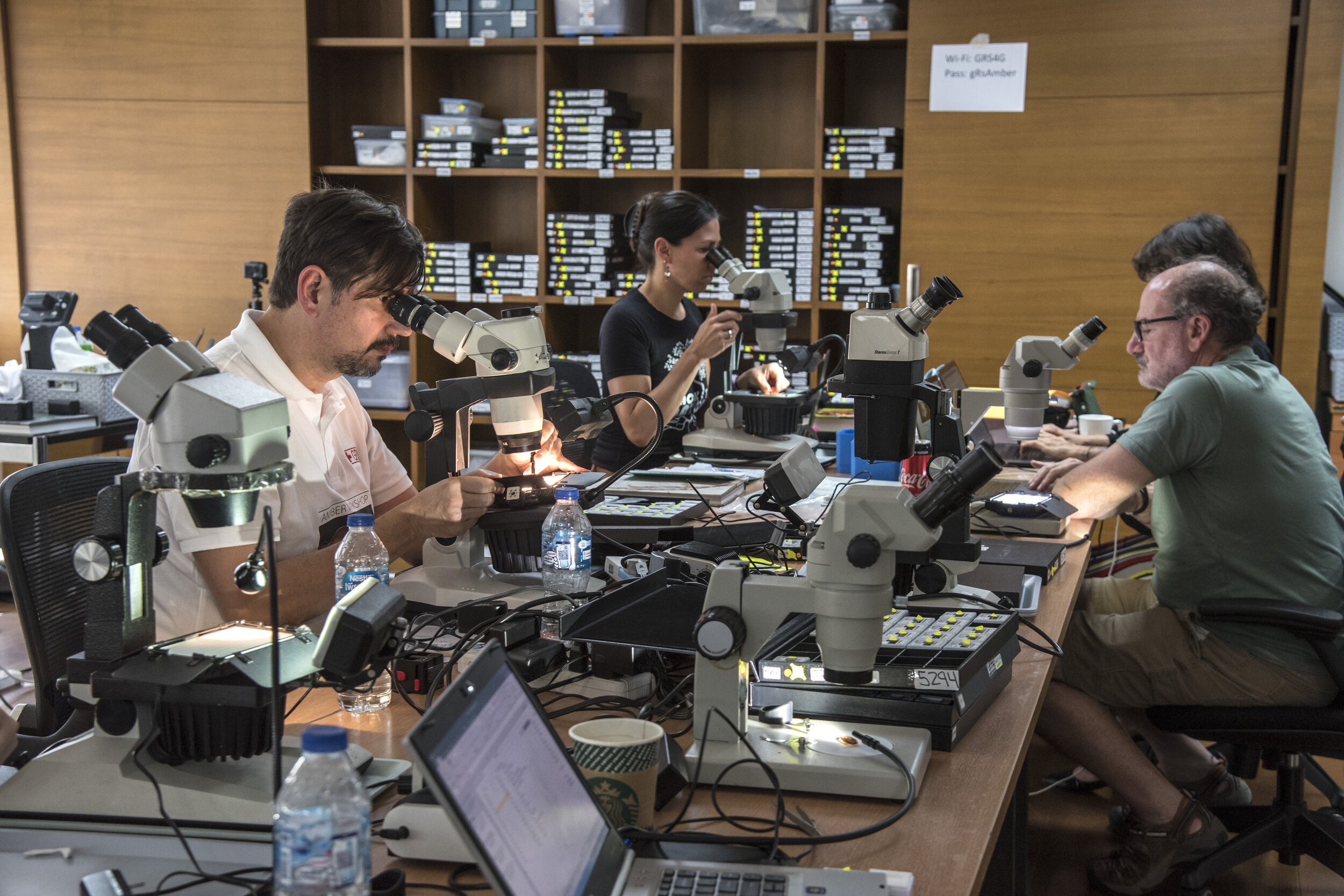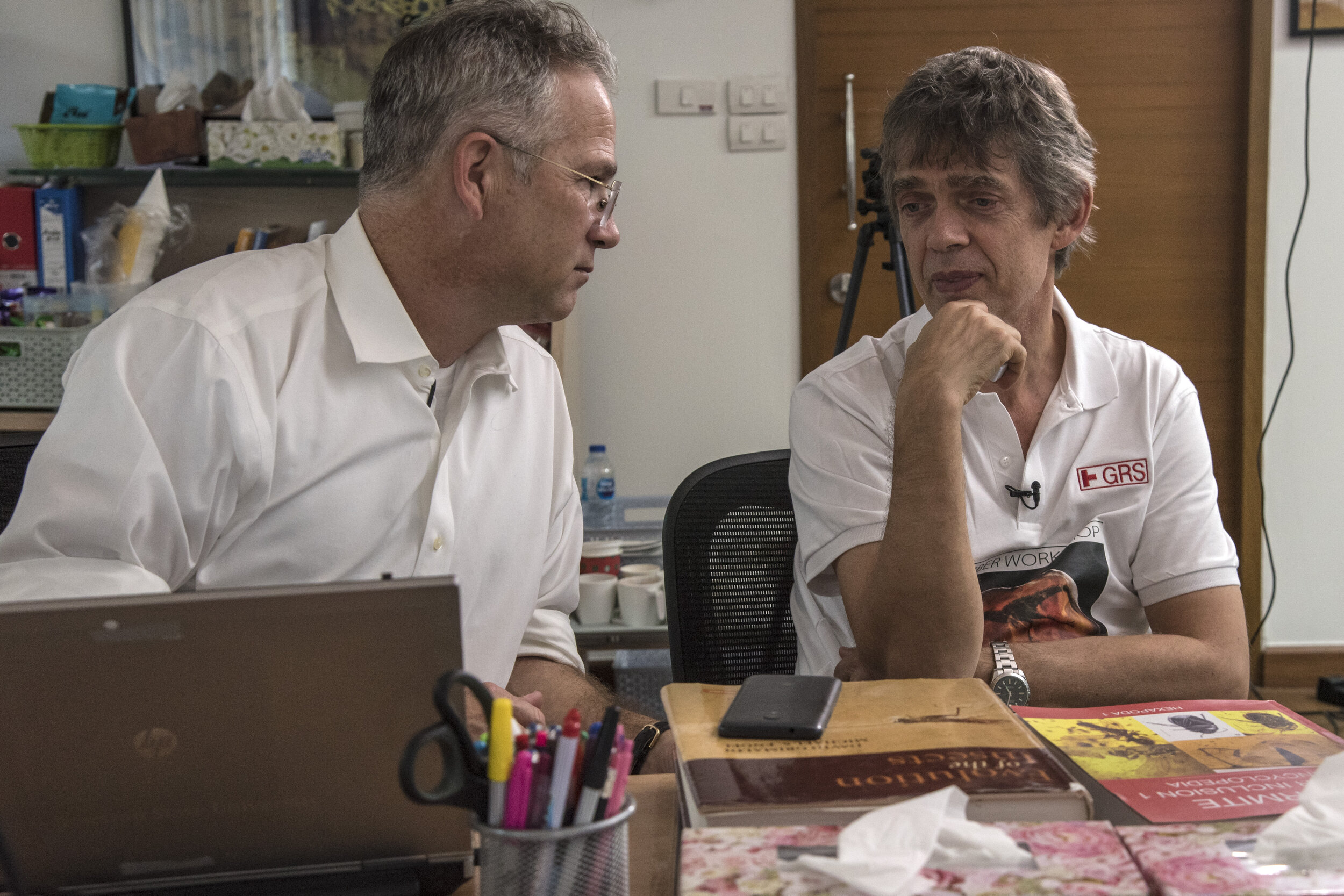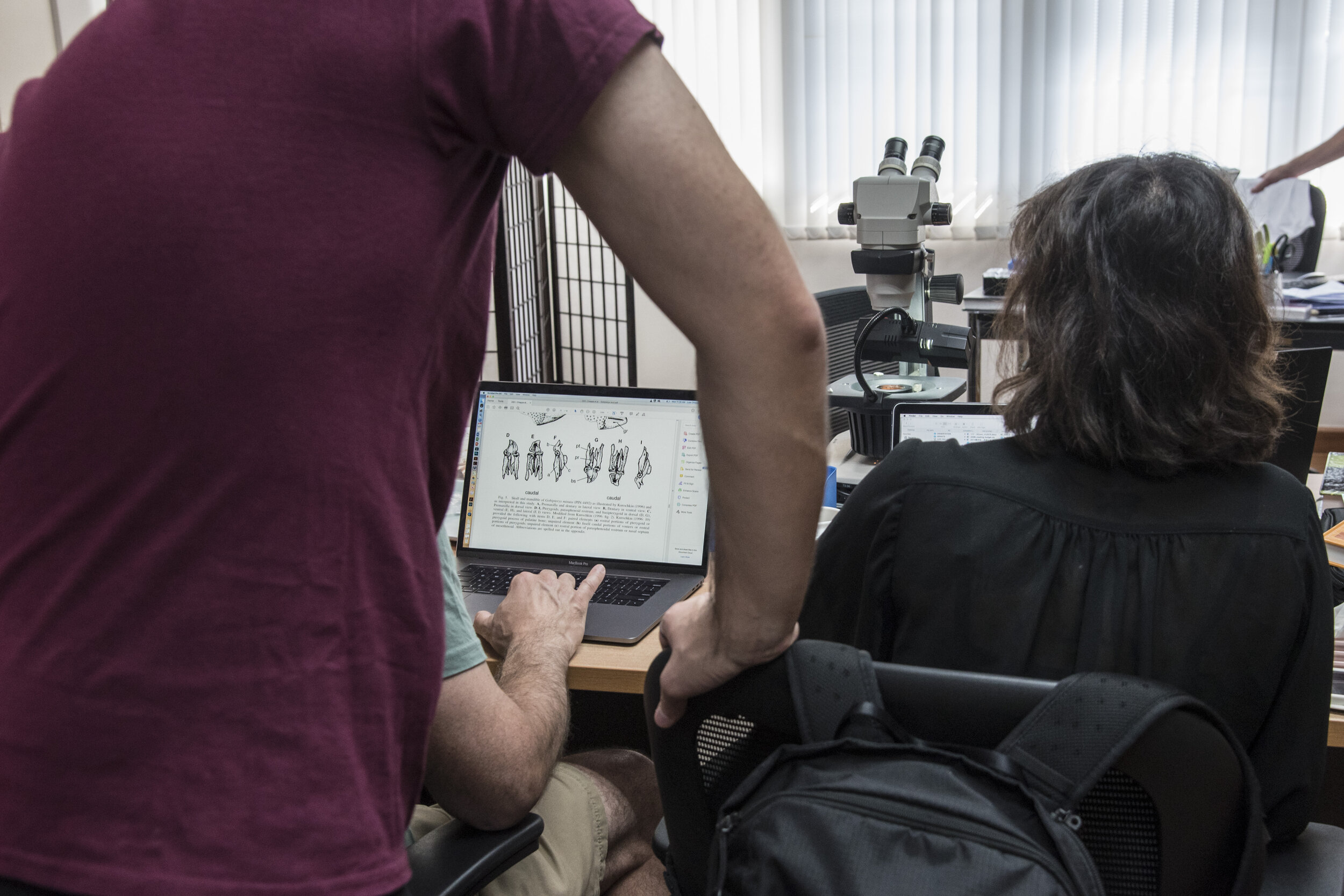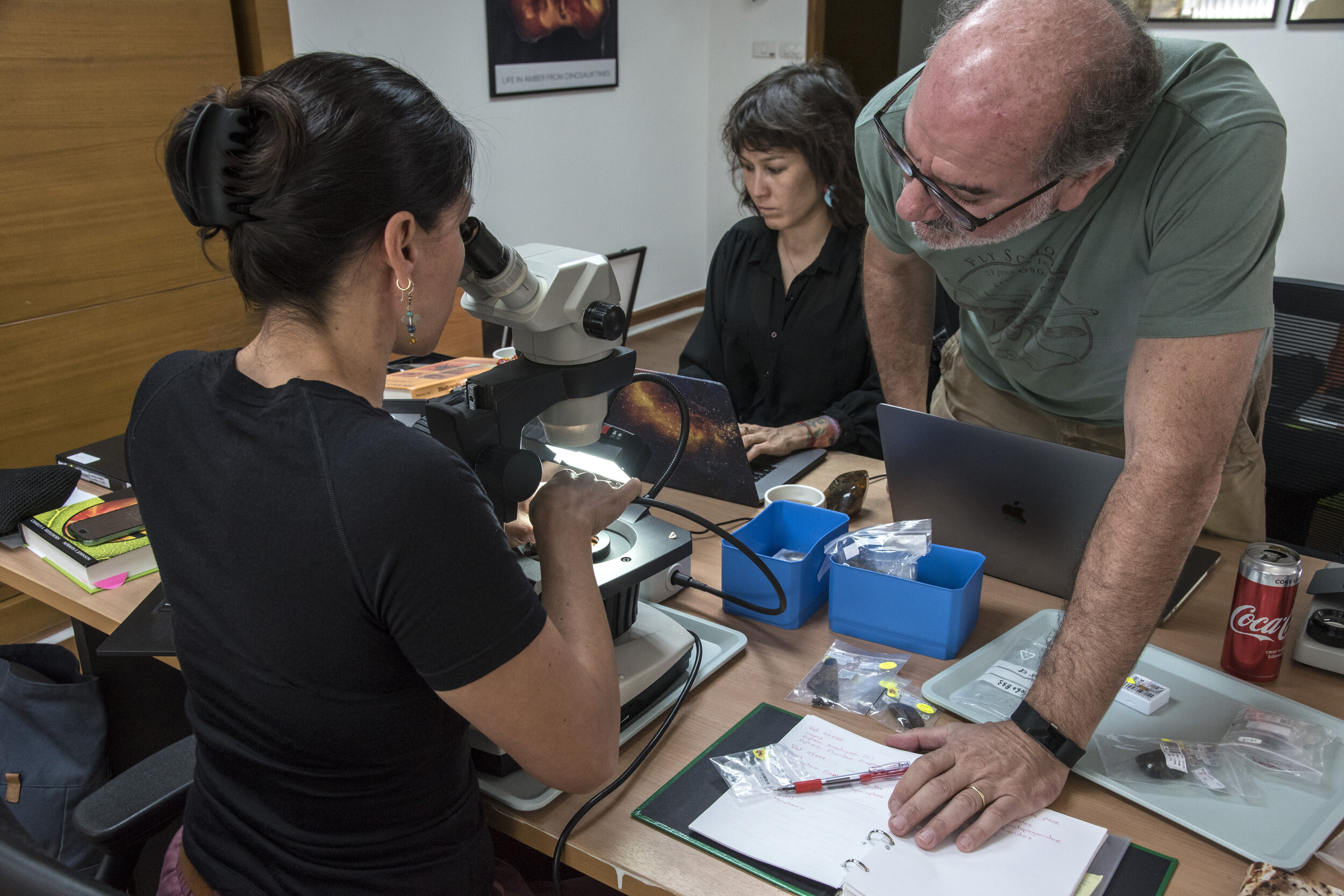Peer Group Amber Research
The Peretti Museum curates a large collection of amber specimens from all major localities across the world, with a special emphasis on the three major Cretaceous amber deposits of Tilin, Khamti and Tannai areas located within the Hukwang Valley, Myanmar.
Burmite amber is of significant paleontological interest due to the diverse and exceptional preservation of invertebrates, vertebrates and plant material. The samples within our Museum collection comprise specimens sourced directly from mine operators in Myanmar, or with their assistance following strict ethical, operational and scientific guidelines.
Given the geological complexity of the Myanmar Valley, the commercial value of Burmite, which has been traded for millennia, and the inherent variability in amber composition, an international expert scientific team was invited by the Peretti Museum Foundation to attend an Amber Symposium at the offices of GRS Thailand from December 14-18, 2019, to assess the Museum’s Burmite collection and scientific significance.
For this purpose, a large number of amber standards were spectroscopically and optically compared for consistency of the amber type (fluorescence, micro-particle-, plant-, and insect- inclusion variability). The exact age of specific Burmite deposits is not precisely known, though a general age of 99 million years is accepted. The availability of an ammonite inclusion and other fossils from amber-containing bedrock enabled the team of experts to validate the age estimate for a number of Burmite mine sources.
The findings are consistent with published data on insects from the Hukwang valley, such as the Zee Phy Gone mine, and will be published shortly. A general workshop report will be made available here as soon as it is finalised. Scientific publications and other outputs generated from the Museum’s collection will also be reported through this site.
